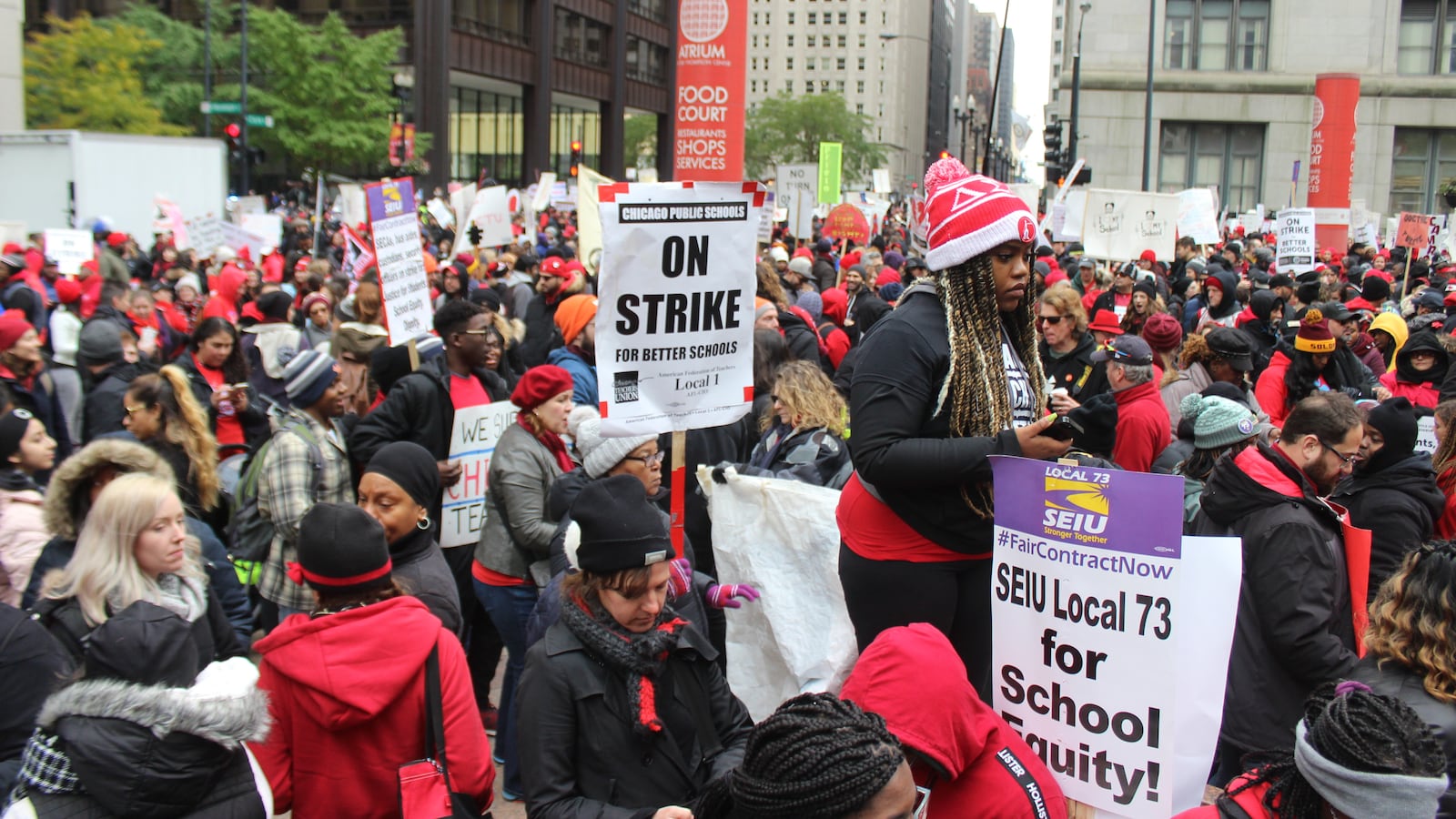The final numbers are in, and Chicago Public Schools laid out its plans Tuesday on how it will cover the first year of generous deals it struck with the unions representing its 32,500 teachers and support staff.
For the current school year, it will cover the costs — pegged at $137 million additional this year for the contracts with the Chicago Teachers Union and Service Employees International Union Local 73 — in part with $68 million it saved in salaries not paid for six days educators were on strike. The district also received $66 million more than it originally budgeted from a tax surplus fund managed by the city.
But those are both one-time solutions, members of the city’s Board of Education acknowledged Tuesday. They reviewed the numbers and raised questions about how much of the city fund, known as tax increment financing dollars, to expect in future years (the answer: no guarantees).
“In the end, we still have a balanced budget,” board President Miguel del Valle said of the district’s revised 2019-20 plan, which the school board weighed Tuesday in advance of votes to finalize the union contracts.
But it was not entirely clear how the district plans to pay for the contracts in the next four years.
At least one ratings agency, Standard & Poor’s, has warned in its recent analysis of the deal that the anticipated costs exceed anticipated revenue growth.
“The settlement has increased expenditures beyond anticipated revenue growth and without corrective measures, could potentially slow or reverse the board’s recent financial progress,” the ratings agency wrote.
Two other ratings agencies used the same word to describe the new costs — “manageable” — and determined that the district’s bond ratings, which affect its expenses, would hold steady.
The Chicago Teachers Union contract is estimated to cost an additional $1.5 billion over the next five years as staffing costs ramp up each year, and as the district hires more teachers, social workers, and nurses.
The board is required by law to review the budgetary revisions publicly before it votes on the tentative agreements next week. Teachers will vote on the agreement this week by secret ballot on Thursday and Friday.
The school district’s final budget was revised to $7.84 billion, up from $7.7 billion. Before teachers had even gone on strike, the school district had factored in the cost of additional nurses and social workers, according to the presentation. New annual costs incurred by the deal include:
- $15 million in increased wages and benefits to reflect 3% cost-of-living raises for teachers, or 0.5% more than raises in the budget the school board approved in August
- $11 million for wage increases for teaching assistants, nurses, clerks, and other support staff represented by the teachers union
- $15 million for support staff represented by SEIU, including special education classroom assistants, security guards, custodians and bus aides
- $5 million in substitute teacher incentives for hard-to-staff schools, plus support for schools with high populations of students who are homeless or in temporary living situations
- $35 million to relieve overcrowded classes
- $5 million in raises for veteran teachers
- $5 million in stipends for coaches and improvement of sports equipment and facilities
- Amounts, unspecified to the board, to lower staffing ratios in classes for English language learners and in other support positions for high-need schools.
The biggest single budget revision the board reviewed on Tuesday was unrelated to the union contract. This year’s revised budget includes $60 million more that Chicago Mayor Lori Lightfoot said in her October budget address that Chicago Public Schools must pay back to the municipal pension fund.
That amount covers pension contributions for about 15,000 non-union employees who work in the central office and elsewhere.
Board members asked about the cost shift and wondered if it will be a recurring cost.
“We expect it to be an ongoing change,” said Heather Wendell, the district’s budget director. “It puts us in line with other city agencies” that she said also have to pay their share of pension contributions.
After years of financial turmoil, Chicago Public Schools has been on firmer financial footing in the past few years, due largely to increased money from the state. But the district still faces a structural deficit, warned Standard & Poor’s in an analysis it released Friday.
However, the district has a potential tool at its disposal, the report said. “The CTU contract does not contain a moratorium on school closings and teaching positions can still be reduced given declining enrollment — both providing budgetary flexibility, if used,” the analysis said.
The latest enrollment figures, released last week, show Chicago Public Schools continues to lose students, though the rate of loss has slowed compared with the previous three years.

